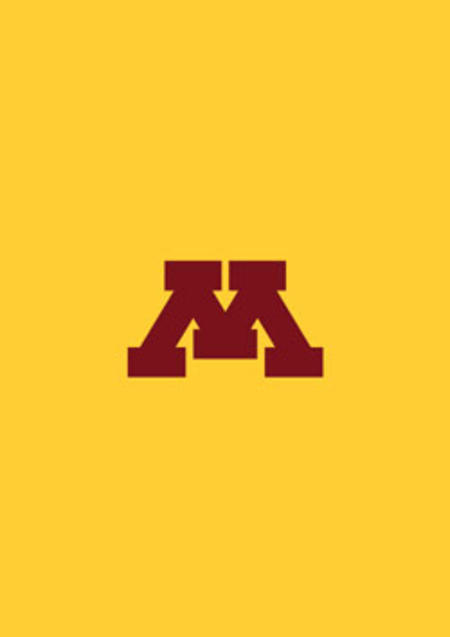Overview
The Advanced Education Program in Pediatric Dentistry trains pediatric dentists for a future in private practice, academic institutions, public health settings and hospital environments consistent with the guidelines established by the American Academy of Pediatric Dentistry. We strive to improve pediatric health care and advance the specialty through the education of pediatric dentists who are committed to safe, high-quality, evidence-based clinical practice, interdisciplinary team care, research discovery, community service and advocacy for improved quality of life for the children of Minnesota and the world.
The Advanced Education Program in Pediatric Dentistry holds the accreditation status of approval without reporting requirements with the American Dental Association’s Commission on Dental Accreditation (CODA). Graduates of the program are educationally qualified for the American Board of Pediatric Dentistry certification process.
Program at a Glance
Joining the Program
Apply
Prospective students must apply through ADEA PASS and register with the National Matching Services. Our application deadline is September 15th of the year prior to the program’s start date. To answer common questions about the residency program, Dr. Jeff Karp, our residency director, hosts 75-minute Q&A sessions via Zoom in February, May, and August 2024 . Register for these sessions with our online form.
Program Requirements
| Subject | Description |
|---|---|
| Test scores | ADA ADAT scores are accepted but not required. GRE, NBDE, and INBDE scores are not required. |
| Transcripts | Must submit official undergraduate and dental school transcripts via ADEA PASS. |
| CV/Resume | Must submit a CV or resume to ADEA PASS. |
| Supplemental application | A supplemental application is not required. |
| Dental licensing | Must be eligible for a Minnesota resident or full dental license. |
| Degree | Must have earned a DMD/DDS degree from a CODA accredited United States or Canadian dental school. |
| Additional requirements | None. |
| International applicants | Must be eligible for either an F1 or TN visa. Applicants must have graduated from a CODA accredited United States or Canadian dental school. |
Curriculum
Designed in accordance with American Academy of Pediatric Dentistry guidelines, the residency includes didactic curriculum, clinical training, medical rotations, research, teaching, and advocacy experiences. Residents learn from experts in the School of Dentistry, the Department of Pediatrics at the School of Medicine, and talented clinicians from the local pediatric healthcare community.
Residents practice at the University of Minnesota Pediatric Dental Clinic Made Possible by Delta Dental of Minnesota, where they treat infants, children, adolescents, and individuals with special health care needs. Residents care for patients with conditions including the following:
- chronic diseases of childhood
- congenital heart disease
- blood and solid organ cancers
- disorders treated with bone marrow therapies
- genetic syndromes
- physical, intellectual, and neurodevelopmental disabilities
- cleft and craniofacial differences
- psychiatric, mood, emotional and behavioral conditions.
Residents provide preventive, diagnostic, restorative, orthodontic, endodontic, prosthodontic, periodontal and surgical pediatric dental services in this clinic. The residency clinic offers treatment with nitrous oxide oxygen analgesia as well as various types of moderate sedation. Dental rehabilitation cases under general anesthesia are performed at the M Health Fairview Masonic Children’s Hospital.
Pediatric medicine, interdisciplinary team care, growth and development, clinical pediatric dentistry and advocacy are emphasized throughout the training experience. First year residents complete medical rotations in emergency medicine and hospital pediatric medicine at the M Health Fairview Masonic Children’s Hospital. They also rotate to Children’s Minnesota for their 4-week anesthesiology rotation. Second year residents complete rotations with the Autism and Neurodevelopmental Clinic, the interdisciplinary clinics at Gillette Children’s Specialty Healthcare, and the oral maxillofacial surgery clinic at the School of Dentistry. Second year residents also staff the cleft palate clinic at the School of Dentistry and teach dental education students in the predoctoral pediatric dentistry clinic. First and second year pediatric dental residents provide pediatric dental services at the Community University Health Care Center, a federally qualified health center and a department within the University of Minnesota Office of Academic Clinical Affairs.
Research
Research projects are completed through structured mentorship by experienced research scholars from the program’s faculty as well as collaborators across the Health Sciences. Residents are expected to present their research findings in a public forum and are encouraged to conduct research worthy of presentation at national meetings and publication in peer reviewed journals.
Senior pediatric dental residents participate in the American Academy of Pediatric Dentistry Public Policy Conference in Washington, D.C. They also attend the American Academy of Pediatric Dentistry Annual Session.

Jeff Karp, DMD, MS
Program Director
he/him/his
6-150 Moos Tower
515 Delaware St. SE
Minneapolis, MN 55455
[email protected]

Haley Busch
Residency Program Coordinator
she/her/hers
7-174A Moos Tower
515 Delaware St SE
Minneapolis, MN 55455
[email protected]